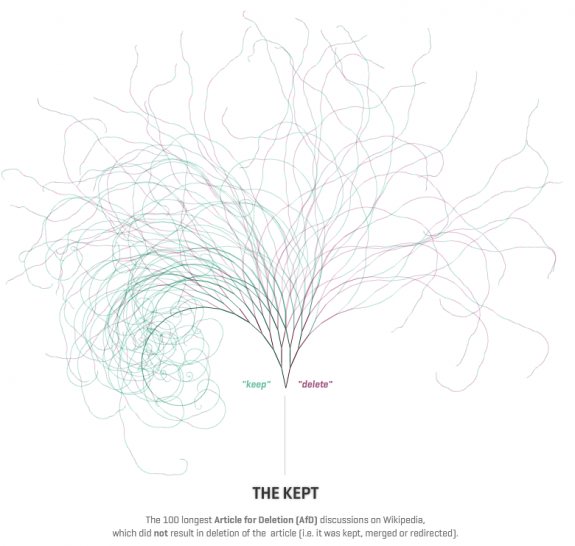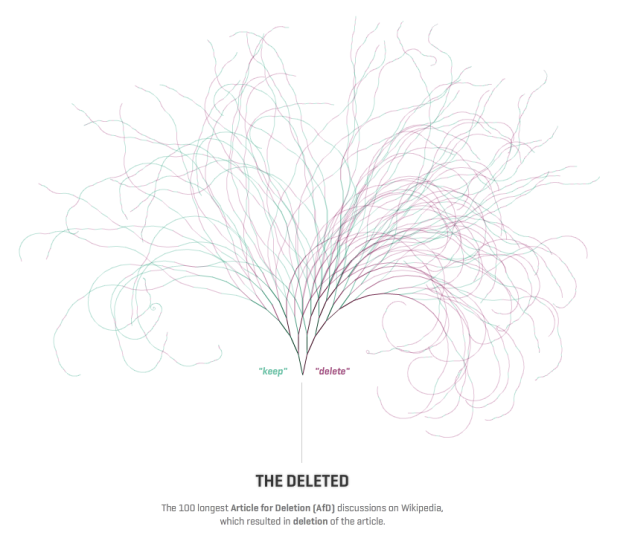Fact is not always clear cut. Sometimes fact is driven by opinion. People might have conflicting points of view or maybe the truth is simply unknown. We can see this via Wikipedia, where anyone can edit and create documents. Sometimes people propose that articles should be taken down, and if the proposal is approved, people can discuss. Dario Taraborelli, Giovanni Luca Ciampaglia, and Moritz Stefaner have a look at the most active of these discussions.
We analyzed and visualized Article for Deletion (AfD) discussions in the English Wikipedia. The visualization above represents the 100 longest discussions that resulted in the deletion of the respective article. AfD discussions are represented by a thread starting at the bottom center. Each time a user joins an AfD discussion and recommends to keep, merge, or redirect the article a green segment leaning towards the left is added. Each time a user recommends to delete the article a red segment leaning towards the right is added. As the discussion progresses, the length of the segments as well as the angle slowly decay.
So the more controversial articles stick straight up, where there is consistent back and forth to keep and delete. Branches that have sway a lot are where keep and delete arguments came in waves, maybe by fans. Branches that curl all the way left or right were more one-sided discussions.
Above is the tree for articles that were eventually deleted. Here’s the one for those that were kept.

While the researchers note that most discussions end pretty quickly, it’s fun to look at the most active ones. Roll over branches to see the topic, and click through to read the discussion.


 Visualize This: The FlowingData Guide to Design, Visualization, and Statistics (2nd Edition)
Visualize This: The FlowingData Guide to Design, Visualization, and Statistics (2nd Edition)

I really like the simplicity of these diagrams. I wonder how deletion discussions would look like for the much more restrictive German Wikipedia.
Well that seems to show a bias towards deletion.
The first tree has a lot more ambiguous discussions (wavy branches) while the second tree has a lot more lines that curl decisively to the left. So it seems that for something to be kept, it requires a lot more positive votes than for something that is to be deleted.
Yeah, in the analysis they comment on how most propose deletions result in actual deletions (or mergings, etc)
Pingback: Notabilia graph « The Optic Nerve
It’s cool and interesting, but slightly difficult to use. Have to be quite precise to hit threads and the text could have been made much easier to read by not throwing it at angles.